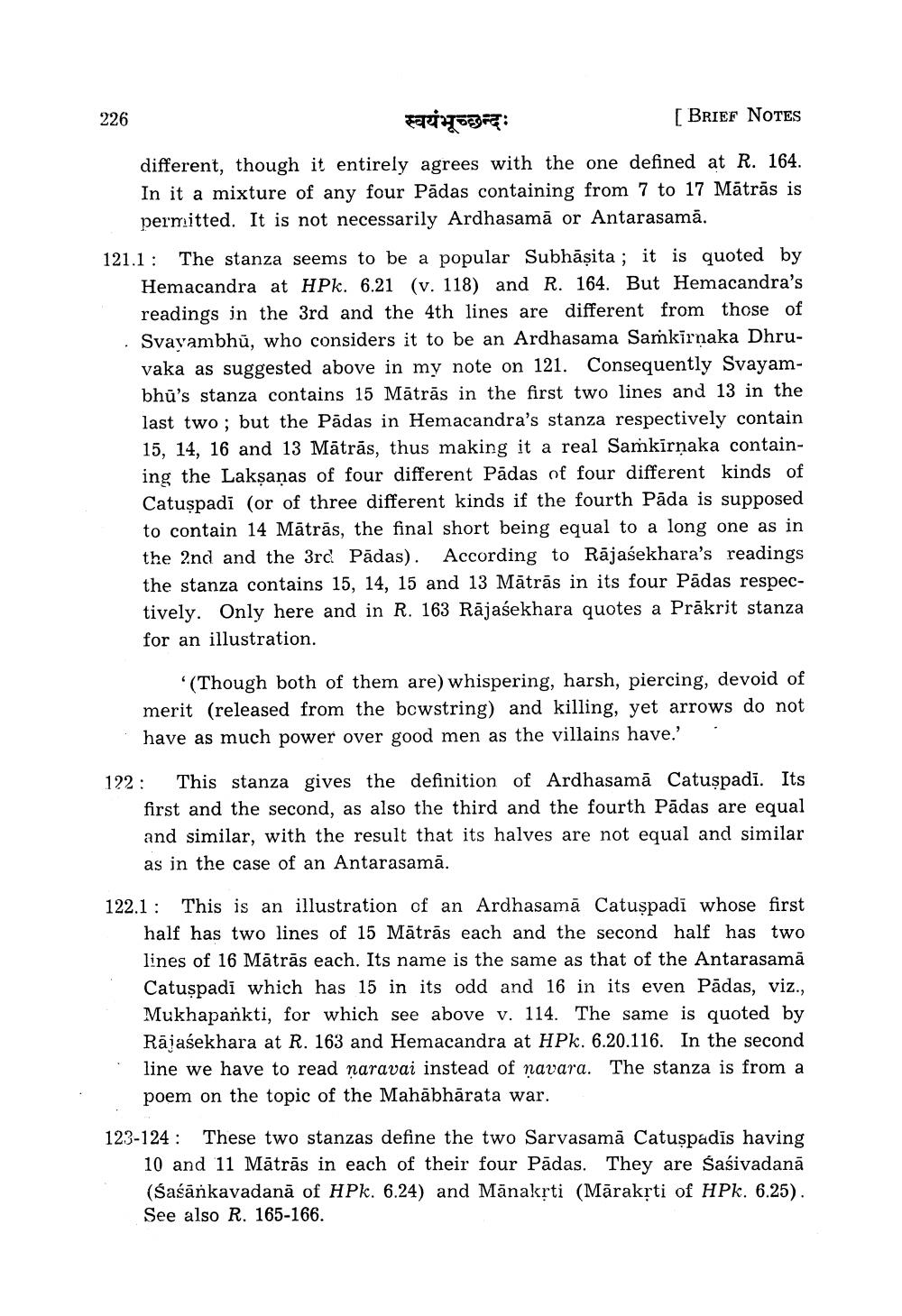________________
226
स्वयंभूच्छन्दः
[ BRIEF NOTES
different, though it entirely agrees with the one defined at R. 164. In it a mixture of any four Pādas containing from 7 to 17 Mātrās is permitted. It is not necessarily Ardhasama or Antarasamā.
121.1: The stanza seems to be a popular Subhāṣita; it is quoted by Hemacandra at HPk. 6.21 (v. 118) and R. 164. But Hemacandra's readings in the 3rd and the 4th lines are different from those of Svayambhu, who considers it to be an Ardhasama Samkirnaka Dhruvaka as suggested above in my note on 121. Consequently Svayambhu's stanza contains 15 Mātrās in the first two lines and 13 in the last two; but the Pādas in Hemacandra's stanza respectively contain 15, 14, 16 and 13 Mātrās, thus making it a real Samkirṇaka containing the Lakṣaṇas of four different Pādas of four different kinds of Catuṣpadi (or of three different kinds if the fourth Pada is supposed to contain 14 Matras, the final short being equal to a long one as in the 2nd and the 3rd Pādas). According to Rajasekhara's readings the stanza contains 15, 14, 15 and 13 Mātrās in its four Pādas respectively. Only here and in R. 163 Rajasekhara quotes a Prakrit stanza for an illustration.
'(Though both of them are) whispering, harsh, piercing, devoid of merit (released from the bowstring) and killing, yet arrows do not have as much power over good men as the villains have.'
This stanza gives the definition of Ardhasama Catuṣpadi. Its first and the second, as also the third and the fourth Pādas are equal and similar, with the result that its halves are not equal and similar as in the case of an Antarasamā.
122:
122.1:
This is an illustration of an Ardhasama Catuşpadi whose first half has two lines of 15 Mātrās each and the second half has two lines of 16 Mātrās each. Its name is the same as that of the Antarasamā Catuṣpadi which has 15 in its odd and 16 in its even Pādas, viz., Mukhapankti, for which see above v. 114. The same is quoted by Rajasekhara at R. 163 and Hemacandra at HPk. 6.20.116. In the second line we have to read naravai instead of navara. The stanza is from a poem on the topic of the Mahabharata war.
123-124:
These two stanzas define the two Sarvasama Catuṣpadis having 10 and 11 Mātrās in each of their four Pādas. They are Śaśivadanā (Saśānkavadanā of HPk. 6.24) and Manakṛti (Mārakṛti of HPk. 6.25). See also R. 165-166.




